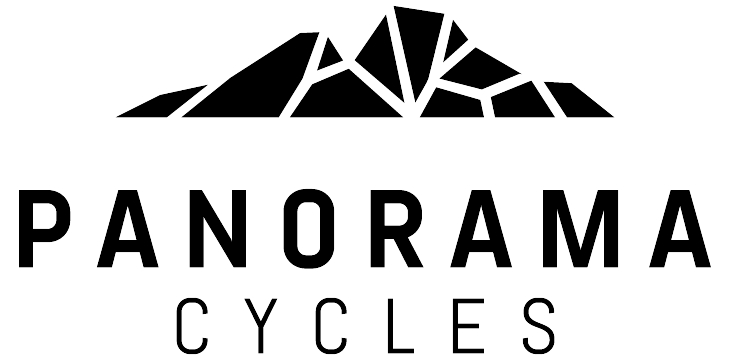
Podcast: Carbon 101 with Simon Bergeron from Panorama Cycles
Simon, co-founder of Panorama Cycles, is a professional engineer who worked in the world of composite materials for over 10 years before launching Panorama Cycles.
He has experienced local production in both the sporting goods and aerospace industries, as well as the mass production of consumer goods manufactured overseas.
He recently had the opportunity to chat with Jean-Philippe from the Sur Deux Roues podcast about his past experiences, what impacts manufacturing quality, and the ins and outs of bike manufacturing in the industry.
Intro/Bio – Expertise and Experience
My passion for mountain biking greatly influenced my academic path. At the age of 16, when I started working in a bike shop, I realized that my interest in the object itself (the bicycle!) was just as strong as my love for the sport. This naturally led me to pursue studies in mechanical engineering.
I had the opportunity to land an internship at Guru Bicycles during my university years. Guru was a bike manufacturer that designed and built all of its carbon, aluminum, steel, and titanium models locally. I stayed with Guru throughout my studies and for a few years afterward, until the company closed. While at Guru, I was mainly responsible for validation testing of new products and for developing tools specific to the manufacturing of composite parts.
After that, I spent several years working in the development of sports equipment, specifically in the production of hockey sticks for CCM. This experience immersed me in the world of mass production of composite parts in factories located in Asia. I had the opportunity to travel extensively, which allowed me to build a solid network overseas.
Finally, before joining Panorama Cycles full-time, I had the chance to work for Hutchinson, a company with a division in Montreal specializing in the production of composite parts for the aerospace industry. This experience helped me further diversify my technical skills and gain a better understanding of the specific requirements of the aerospace sector.
________________________________________
Is Carbon Fragile?
A carbon fiber construction can be extremely strong and high-performing if it is well designed and suited for its intended environment. On the other hand, it can also be very fragile, again depending on its design and application. Three key aspects explain this variability.
First, the improper use of carbon fiber (which may be the source of the myth that it is fragile) often involves a design focused solely on achieving high stiffness while minimizing weight.
There are different grades of carbon fiber, each offering different stiffness characteristics. Imagine a design aiming for maximum stiffness with the lowest possible weight. Only the highest-grade fibers would be used, but such a structure would likely have low impact resistance compared to a design using more material of a lower grade, which typically provides higher strength.
The second factor influencing strength is fiber orientation. It's important to understand that carbon fiber is a filament aligned in a specific direction during construction. If the bike designer aligns the fibers in only one direction—say, to optimize power transfer while pedaling—then a force or impact from a different direction could stress the structure. This can lead to frame failure, as the fibers weren’t oriented to handle that kind of force.
Lastly, a general weakness of composite structures is interlaminar strength. During carbon part manufacturing, fibers are laid in layers, and a resin matrix (usually epoxy for bikes) binds them together. However, epoxy is much more fragile than carbon fiber. An interlaminar break often occurs from an impact, causing layers to separate—sometimes without visible signs. As the bike is ridden and the frame flexes, this damage can grow and become more apparent.
________________________________________
How Is a Carbon Frame Made?
The vast majority of the industry uses pre-impregnated carbon fiber (prepreg) to manufacture products. This is the process we’ll describe here.
Rolls of prepreg carbon fiber are unrolled onto large cutting tables, where they are cut into various shapes destined for different frame sections. Each piece of carbon must be applied manually onto a male mandrel, which represents the inner volume of the frame. The quality of the preforming process is critical for ensuring a high-quality part. Moreover, the precision of this mandrel (male mold) directly affects the final product quality.
Once the layup is complete, the mandrel is removed and the preform is placed in a female mold, which defines the external shape of the frame. The mold is then gradually heated (according to the resin's chemistry), and pressure is applied inside the preform.
The heating process is designed to fully liquefy the resin and evacuate trapped air between layers, as air can lead to defects. At a certain point during the cycle, the resin begins to solidify, locking in the shape of the frame.
Once the cure is complete, the part is demolded and the finishing steps (sanding, bonding, painting) begin.
________________________________________
What’s the Difference Between an Open Mold and a Proprietary Mold?
Factories typically own sets of molds and tools. On one hand, their R&D and industrialization teams need to run development tests, and wouldn’t use a customer’s tools for that. On the other hand, they need to promote their capabilities and showcase their expertise to potential clients (bike brands) at industry fairs and trade shows. To preserve client confidentiality, they often use open mold frames for display at such events.
That said, many factories now offer their open mold frames directly to consumers. It’s extremely difficult for someone outside the industry to assess the quality of the laminate design and manufacturing, as this depends on the factory's methodology and standards. Without that knowledge, buying an open mold frame can be a gamble.
A company like ours maintains strict quality standards that we enforce with our manufacturing partners. When designing our tooling, we ensure that layup tools are perfectly suited to the laminate thicknesses we’ll be using. We verify that the laminates meet our product requirements and customer expectations. We also ensure that the agreed level of quality is being achieved.
Our manufacturing partners work exclusively with brands. From my experience, factories that serve multiple brands have much more to lose from poor quality than a factory selling only open mold frames online. A low-quality frame bought on Alibaba may have little impact on the factory, but a big impact on the buyer. In contrast, factories that sign OEM agreements with bike brands know that production failures can seriously damage their reputation.
________________________________________
Layup – Why Is It So Important for Quality?
The layup is the sequence in which carbon fiber layers are applied. Each layer can have its own thickness, angle, shape, and physical properties. The combination of layup and tube shape determines the physical and mechanical characteristics of a carbon frame. Bike brands develop their own layups (or delegate it to their manufacturing partner) to meet various targets: weight, stiffness, strength, and production cost.
For Panorama bikes, our layup development philosophy focuses on maximizing interlaminar strength, which contributes significantly to overall strength and impact resistance. To achieve this, we favor many thin layers rather than fewer thick ones. For example, in a specific area, we might choose to use 18 layers of a mass density of 70 g/m² instead of 9 layers of 140 g/m². The final weight is the same, but the strength is significantly better, for two main reasons:
18 layers create 17 interfaces, while 9 layers create only 8. More interfaces dramatically increase interlaminar strength.
With 18 layers instead of 9, there’s more flexibility in adjusting fiber angles. With the additional layers, we can vary angles more precisely, which improves overall structural strength.
Using thinner layers inevitably increases material and labor costs, but the quality and durability are significantly improved.
________________________________________
How Does Carbon Frame QA Work?
Carbon fiber manufacturing is a complex process involving many steps, people, and tools.
Even after the manufacturing method is set, employees are trained, and tools validated, it’s essential to inspect every part. A simple visual inspection right after demolding can spot flaws like wrinkles, fiber misalignments, or resin-rich areas—usually caused by poor layup.
One example we’ve implemented for our products is a process quality control to ensure the curing/pressure cycle remains stable throughout production. During curing, as the resin heats up and becomes liquid, some of it escapes from the mold—this removes air bubbles that would otherwise form porosity. This resin evacuation is essential for producing quality parts.
The QA process involves measuring how much resin is expelled during curing—on every part. This allows us to verify that the temperature and pressure cycle was properly followed and that the part consolidated correctly according to our specifications.
Thank you for taking the time to read this article, and for now knowing a bit more about the expertise behind our products.









